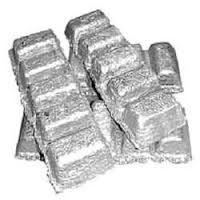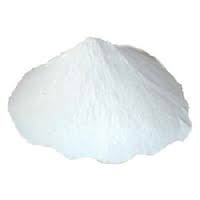Zinc is 24th most abundant element in the Earth's crust and the fourth most common used metal. This element has a low affinity for oxides and prefers to bond with sulphides. The most common zinc ore is Sphalerite, a zinc sulphide mineral consisting largely of zinc sulphide in crystalline form, containing iron. The largest mineable amounts are found in Australia, Asia, and the United States. In the human body zinc is found in the brain, muscle, bones, kidney and liver, with the highest concentrations in the prostate and parts of the eye.
Function of Zinc in the Body
Zinc is an essential trace element and the second most abundant transition metal in animals, plants and microorganisms. It is the only metal which appears in all enzyme classes and is utilized in about 100 enzyme functions and possibly many more[1]. It plays an important role in the metabolism of RNA and DNA and regulates program cell death. Zinc is known to play a central role in the proper function of the immune system, and is crucial for normal development and function of cells mediating nonspecific immunity, such as neutrophils and natural killer cells [2]] - and has also be found to significantly reduce the incidence of pre-term births[3]. Through its' strong anti-inflammatory action and its' stimulation of bone growth, Zinc is considered to be an anti-aging molecule[4].
| Signs | Symptoms | Related Conditions |
|---|---|---|
| Skin lesions and rashes Dry and/or scaling skin Spots on fingernails Scalp lesions Thin and sparse hair Mouth ulcerations White coating over the tongue |
Respiratory infections Pneumonia especially in children Loss of appetite Impaired motor and cognitive skills of the infant Reduced fertility Sleep disturbance Loss of sex drive Loss of taste or smell Depression Slow wound healing Increased occurrence of severity of diarrhoea Foetus's neurological system damage |
Alopecia[5] Alzheimer's[6] Anorexia Autism [7] Burning mouth syndrome Dermatitis[8] Hypogonadism Hypothyroidism[4] Seborrhoea dermatitis[8] |
Reference
- Maret. W. 2013 Zinc and Human Disease. Nov Vol 13, pp 389-414: Metal Ions in Life Sciences
- Chasapis T.C. Loutsidou A.C. et all, 2012, Zinc and human health: an update April Volume 86, Issue 4, pp 521-534 Archives of Toxicology
- Cochrane Database Syst Rev. Mori. R, Ota. E, et all: 2012, Zinc supplementation for improving pregnancy and infant outcome. Jul 11; 7 Cochrane Database Syst Rev.
- Yamaguchi M, 2010, Role of nutritional zinc in the prevention of osteoporosis. May: 338(1-2):241-54 Mol Cell Biochem.
- Ambooken B, Binitha M.P, & Sarita S. 2013, Zinc Deficiency Associated with Hypothyroidism: An Overlooked Cause of Severe Alopecia. Jan-Mar; 5(1): 40Ė42 Int J Trichology.
- Brewer G. 2012, Copper excess, zinc deficiency, and cognition loss in Alzheimer's disease. Mar-Apr;38(2):107-13. Biofactors.
- Yasuda H. Yoshida. K & et all. 2011. Infantile zinc deficiency: association with autism spectrum disorders. Nov; 1:129 Sci Rep.
- MichaŽlsson. G & Ljunghall. K. 1990; Patients with dermatitis herpetiformis, acne, psoriasis and Darier's disease have low epidermal zinc concentrations. 70(4):304-8 Acta Derm Venereol

